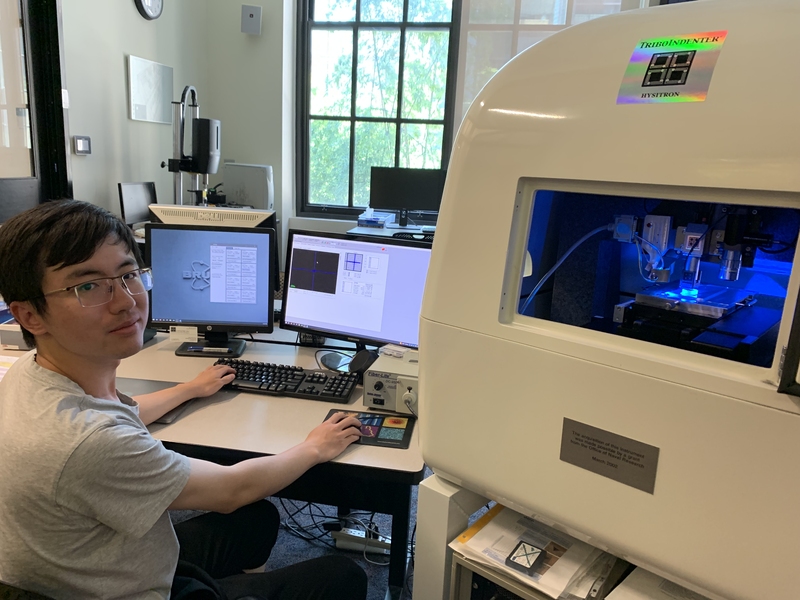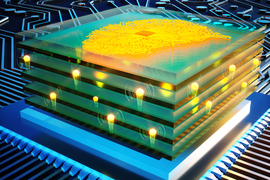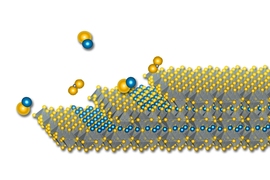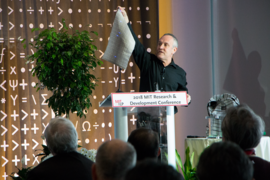In an example of the adage “everything old is new again,” MIT engineers report a new discovery in semiconductors, well-known materials that have been the focus of intense study for over 100 years thanks to their many applications in electronic devices.
The team found that these important materials not only become much stiffer in response to light, but the effect is reversible when the light is turned off. The engineers also explain what is happening at the atomic scale, and show how the effect can be tuned by making the materials in a certain way — introducing specific defects — and using different colors and intensities of light.
“We’re excited about these results because we’ve uncovered a new scientific direction in an otherwise very well-trod field. In addition, we found that the phenomenon may be present in many other compounds,” says Rafael Jaramillo, the Thomas Lord Associate Professor of Materials Science and Engineering at MIT and leader of the team.
Says Ju Li, another MIT professor involved in the work, "to see defects having such big effects on elastic response is very surprising, which opens the door to a variety of applications. Computation could help us screen many more such materials." Li is the Battelle Energy Alliance Professor in Nuclear Science and Engineering (NSE) with a joint appointment in the Department of Materials Science and Engineering (DMSE). Both Jaramillo and Li are also affiliated with the Materials Research Laboratory.
The work is reported in the Aug. 3 issue of Physical Review Letters. The resulting paper was highlighted as an Editors’ Suggestion. It is also the focus of an accompanying synopsis for Physics Magazine titled “Semiconductors in the Spotlight,” by Sophia Chen.
Additional authors of the paper are Jiahao Dong and Yifei Li, DMSE graduate students who contributed equally to the work; Yuying Zhou, a DMSE visiting graduate student from the Shanghai Institute of Applied Physics; Alan Schwartzman, a DMSE research scientist; Haowei Xu, a graduate student in NSE; and Bilal Azhar, a DMSE undergraduate who graduated in 2020.
Intriguing problem
Jaramillo remembers being intrigued by a 2018 paper in Science showing how a semiconductor made of zinc sulfide becomes more brittle when exposed to light. “When [the researchers] shone light on it, it behaved like a cracker. It snapped. When they turned off the light, it behaved more like a gummy bear, where it could be squeezed without breaking into pieces.”
Why? Jaramillo and colleagues decided to find out.
Along the way, the team not only reproduced the Science work, but also showed that the semiconductors changed their elasticity, a form of mechanical stiffness, when exposed to light.
“Think of a bouncy ball,” says Jaramillo. “The reason it bounces is because it’s elastic. When you throw it on the ground, it deforms but then immediately springs back (that’s why it bounces). What we discovered, which was really quite surprising, is that the elastic properties [of semiconductors] can undergo tremendous changes under illumination, and that these changes are reversible when the light is switched off.”
What’s happening
In the current work, the team did a variety of experiments with zinc sulfide and two other semiconductors in which they measured the stiffness of the materials under different conditions, such as light intensity, using a sensitive technique called nanoindentation. In that technique, a diamond tip moved across the surface of the material records how much force it takes to push the pin into the topmost 100 nanometers, or billionths of a meter, of the surface.
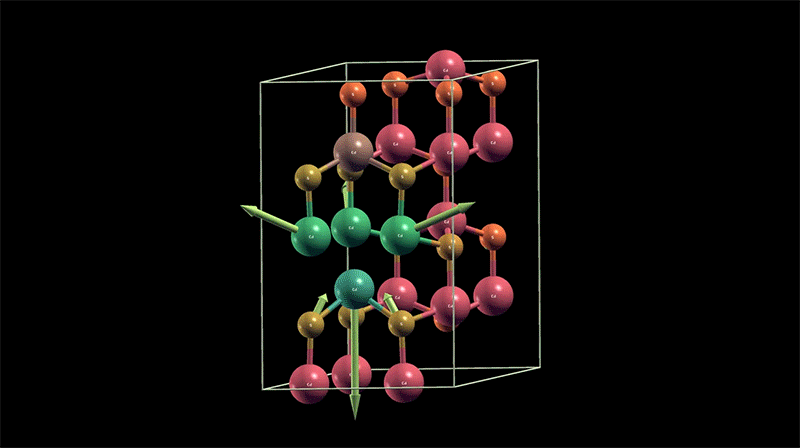
They also performed computer simulations of what could be happening at the atomic scale, slowly developing a theory for what was happening. They discovered that defects, or missing atoms, in the materials played a significant role in the materials’ mechanical response to light.
“These vacancies cause the crystal lattice of the material to soften because some of the atoms are farther apart. Think of people on a subway car. It’s easier to squeeze in more people if there are bigger spaces between them,” Jaramillo says.
“Under illumination, the atoms present are excited and become more repellent. It’s as if those people on the subway car suddenly started dancing and throwing their arms around,” he continued. The result: the atoms more strongly resist being packed more closely together and the material becomes more mechanically stiff.
The team quickly discovered that they could tune that stiffness by changing the intensity and color of the light, and by engineering specific defects into the materials. “It’s nice when you can reduce something to defect engineering, because then you can plug into one of materials scientists’ core competencies, which is controlling the defects,” Jaramillo said. “That’s pretty much what we do for a living.”
This work was supported by the Office of Naval Research.
